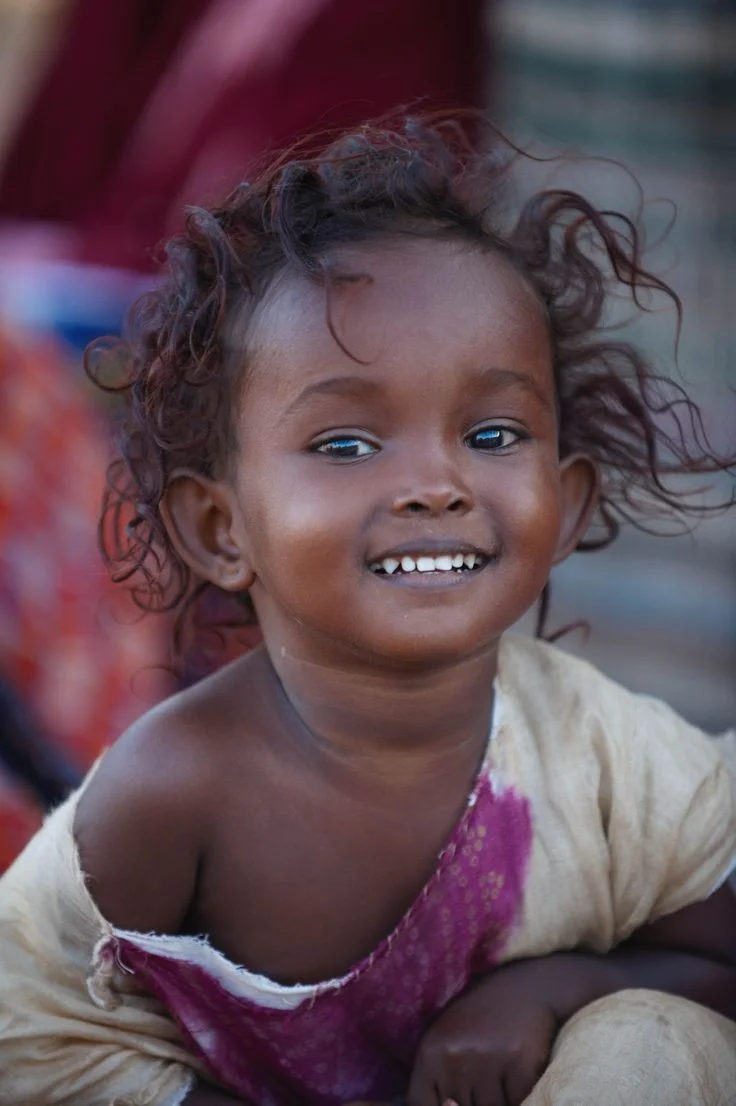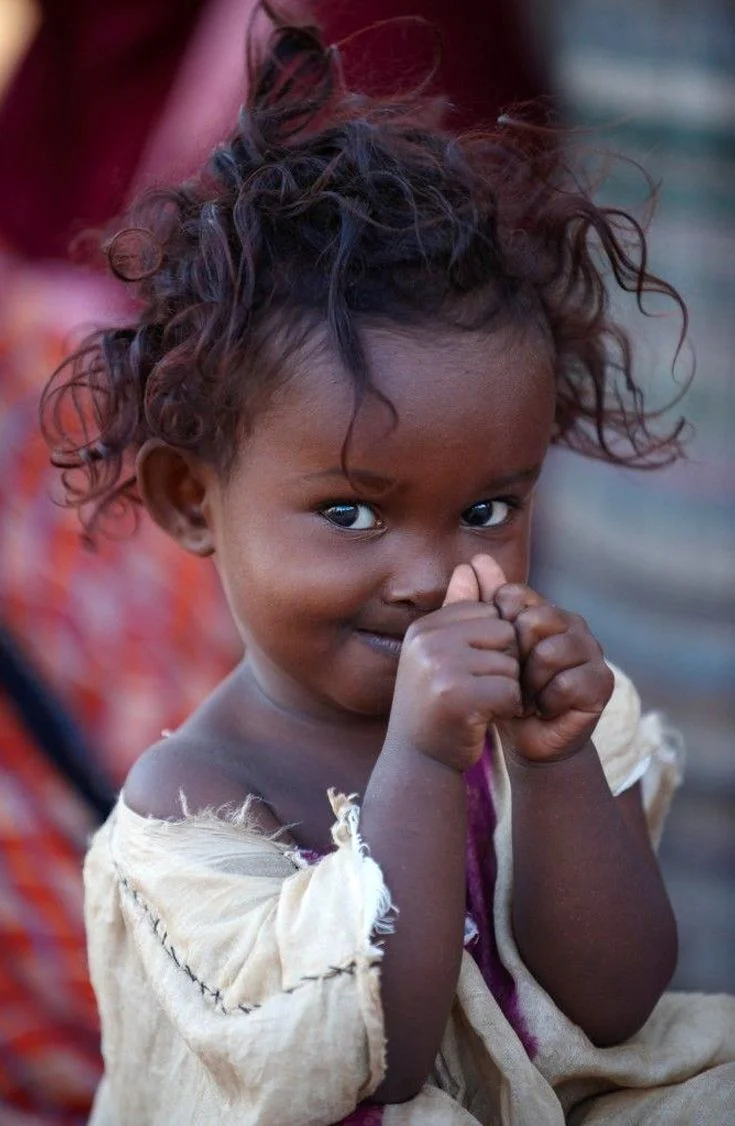Safa Idriss Nour Is Waris Dirie's 'Desert Flower' In the Fight To End FGM In Somalia
/A simple Facebook share last week elicited more likes than any supermodel has achieved on my page. Meet Safa Idriss Nour, a young girl born in a slum in Dijibouti, Somalia. Perhaps her gorgeous young-girl face soothed a world under fire in Beirut, Nigeria and Paris. Mali had not blown up yet as my FB friends fell under Safa's spell.
On Friday I decided to look for information about this young girl, and the truth of her life amazed me.
An estimated 98% of girls and women in Djibouti, a country of about 600,000 inhabitants founded in 1888 by the French, on land leased from the ruling Somali and Afar Sultans, have undergone female genital mutilation, a procedure of varying severity in Somali culture. AOC has a long history of writing about FGM, the cutting off a female's clitoris and some of the labia. The procedure -- executed without anaesthetic -- is designed to protect a girl's purity and represents a sign of commitment to a future husband over a desire for sexual pleasure. In the most severe cases of FGM, a girl's labia is sewn together and only reopened after marriage. The probability of a young woman not being desirable as a bride and commanding no bride price for her family is high.
NGOs, activists, models and female actors worldwide have sought changes that end FGM. Occasionally, a member of the so-called intelligensia -- almost always a western-educated white person -- argues in favor of FGM, or at least leaving the decision in the hands of local culture.
Waris Dirie Meets Safa Idriss Nour
Top Somali model and anti-FGM activist Waris Dirie is no FGM apologist. Her international best-selling, 1997 autobiography 'Desert Flower' traces her birth into a nomadic family in Somalia and her own cutting. Dirie fled her birthplace at age 13, when her father tried to marry her off to a 60-year-old man.
In 2007 Nour received an opportunity to play a young Dirie as she undergoes FGM -- but there was a condition attached by Dirie. Nour's parents had to agree with a signed contract to never cut their daughter. The paper was signed and Safa Idriss Nour played the daughter of Waris Dirie. This coming together of two feminine spirits is tracked online at Dirie's Desert Flower Foundation, where the model activist recalls her own FGM experience.
"The next thing I felt was my flesh, my genitals, being cut away. I heard the sound of the dull blade sawing back and forth through my skin. When I think back, I honestly can’t believe that this happened to me. I feel as if I were talking about somebody else. There’s no way in the world I can explain what it feels like.
It’s like somebody is slicing through the meat of your thigh, or cutting off your arm, except this is the most sensitive part of your body. However, I didn’t move an inch, because I remembered Aman and knew there was no escape. And I wanted Mama to be proud of me.
I just sat there as if I were made of stone, telling myself the more I moved around, the longer the torture would take. Unfortunately, my legs began to quiver of their own accord, and shake uncontrollably, and I prayed, Please, God, let it be over quickly. Soon it was, because I passed out."
As a western woman I first read a detailed personal recollection of FGM in 2009. It was late at night and I first screamed loudly, then threw the book across the room and then sat in my bed sobbing.
Trouble For Nour In Djibouti
Four years later in 2011, Dirie received a letter from Nour, then seven, indicating that her parents were having second thoughts about her FGM. "When we play on the street, the children run away and curse and say bad things. They say I stink, but that's not true at all. Maman and Papa also argue because of me and Maman cries a lot. Safa is a disgrace, she is not circumcised!"
"I was shocked and I was very angry," Dirie, then 48, said. "I decided I had to fly to Djibouti immediately to save my little girl from this brutal crime."
The letter and subsequent events launched another book 'Safa: The Rescue of the Little Desert Flower'.. Writing about the book in July 2015, June Eric Udorie says that the deeply personal comments made about Safa underscore the "complexity of tackling and ending the practice of female genital mutilation. A toxic mix of religion, culture and social pressure means that the practice, which involves the partial or total removal of the external genitalia, continues despite its dangers and costs: it is thought to have affected 140 million women and girls worldwide, with three million more girls at risk every year."
Dirie herself explains further:
"Safa's family is surrounded by others struggling every day to survive. Even though the families have very little money, they save what money they have to cut their daughters, because otherwise they will not get a bride price from the future husband," Dirie said. "Because of our support, Safa's family is completely independent and the first family in the area to stop the vicious circle. This is a breach of their tradition, and people have big problems with this."
Dirie has brought the family to Europe so that they can talk about their experiences and also the corrective surgery now possible for victims of FGM. Like Tostan, featured extensively on AOC, real change around Female Genital Cutting comes from the communities themselves.
Despite her ambivalence of the cultural pressures around FGM in Somalia, Dirie's own mother asked her to take her niece Hawo and protect her from FGM. And Dirie is thrilled that Nour's father has become an advocate for her organization. Realistically though, trying to encourage broader behaviour change through education is not easy. "Educating communities is very difficult as people are very stubborn and not willing to change their habits even if it is against humanity," says Dirie.
I will write a followup to this post, updating all the recent world news around FGM. For now, let me say how wonderful and touching it was to 'meet' Safa Idriss Nour and see her photos impact so many people. Now I will share Safa's entire story, which is certain to further the human connection between this Somali girl and all those touched by her story.






